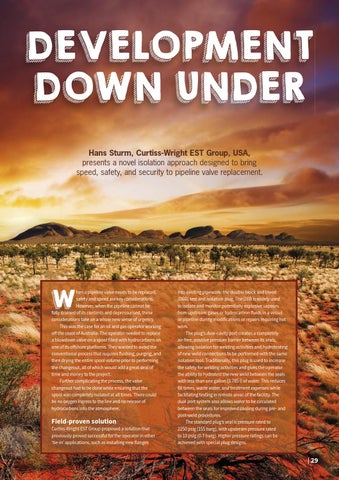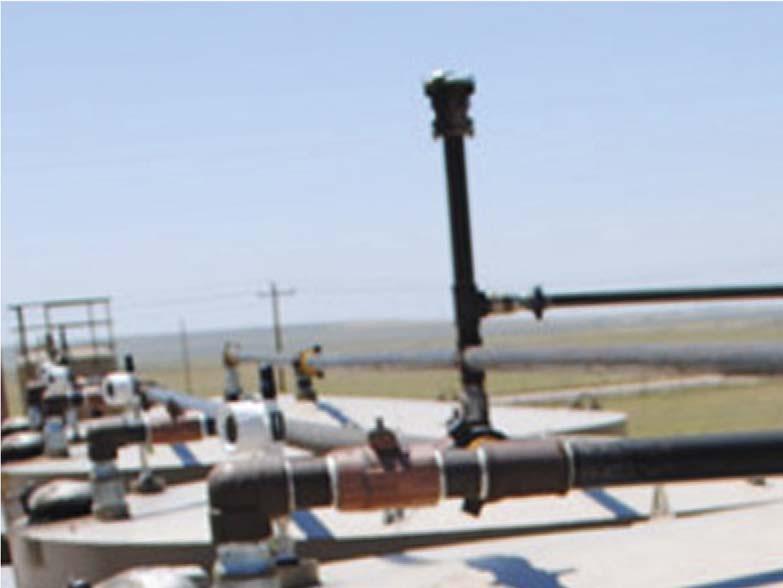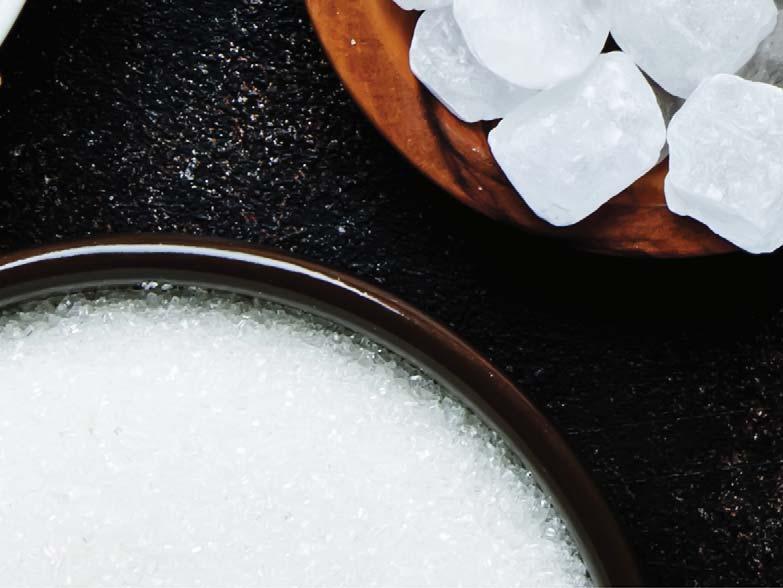DEVELOPMENT DOWN UNDER Hans Sturm, Curtiss-Wright EST Group, USA, presents a novel isolation approach designed to bring speed, safety, and security to pipeline valve replacement.
W
hen a pipeline valve needs to be replaced, safety and speed are key considerations. However, when the pipeline cannot be fully drained of its contents and depressurised, these considerations take on a whole new sense of urgency. This was the case for an oil and gas operator working off the coast of Australia. The operator needed to replace a blowdown valve on a spool filled with hydrocarbons on one of its offshore platforms. They wanted to avoid the conventional process that requires flushing, purging, and then drying the entire spool volume prior to performing the changeout, all of which would add a great deal of time and money to the project. Further complicating the process, the valve changeout had to be done while ensuring that the spool was completely isolated at all times. There could be no oxygen ingress to the line and no release of hydrocarbons into the atmosphere.
Field-proven solution Curtiss-Wright EST Group proposed a solution that previously proved successful for the operator in other ‘tie-in’ applications, such as installing new flanges
into existing pipework: the double block and bleed (DBB) test and isolation plug. The DBB is widely used to isolate and monitor potentially explosive vapours from upstream gases or hydrocarbon fluids in a vessel or pipeline during modifications or repairs requiring hot work. The plug’s dual-cavity port creates a completely air-free, positive pressure barrier between its seals, allowing isolation for welding activities and hydrotesting of new weld connections to be performed with the same isolation tool. Traditionally, this plug is used to increase the safety for welding activities and gives the operator the ability to hydrotest the new weld between the seals with less than one gallon (3.785 l) of water. This reduces fill times, waste water, and treatment expenses while facilitating testing in remote areas of the facility. The dual port system also allows water to be circulated between the seals for improved cooling during pre- and post-weld procedures. The standard plug’s seal is pressure rated to 2250 psig (155 barg), with upstream pressure rated to 10 psig (0.7 barg). Higher pressure ratings can be achieved with special plug designs.
| 29










